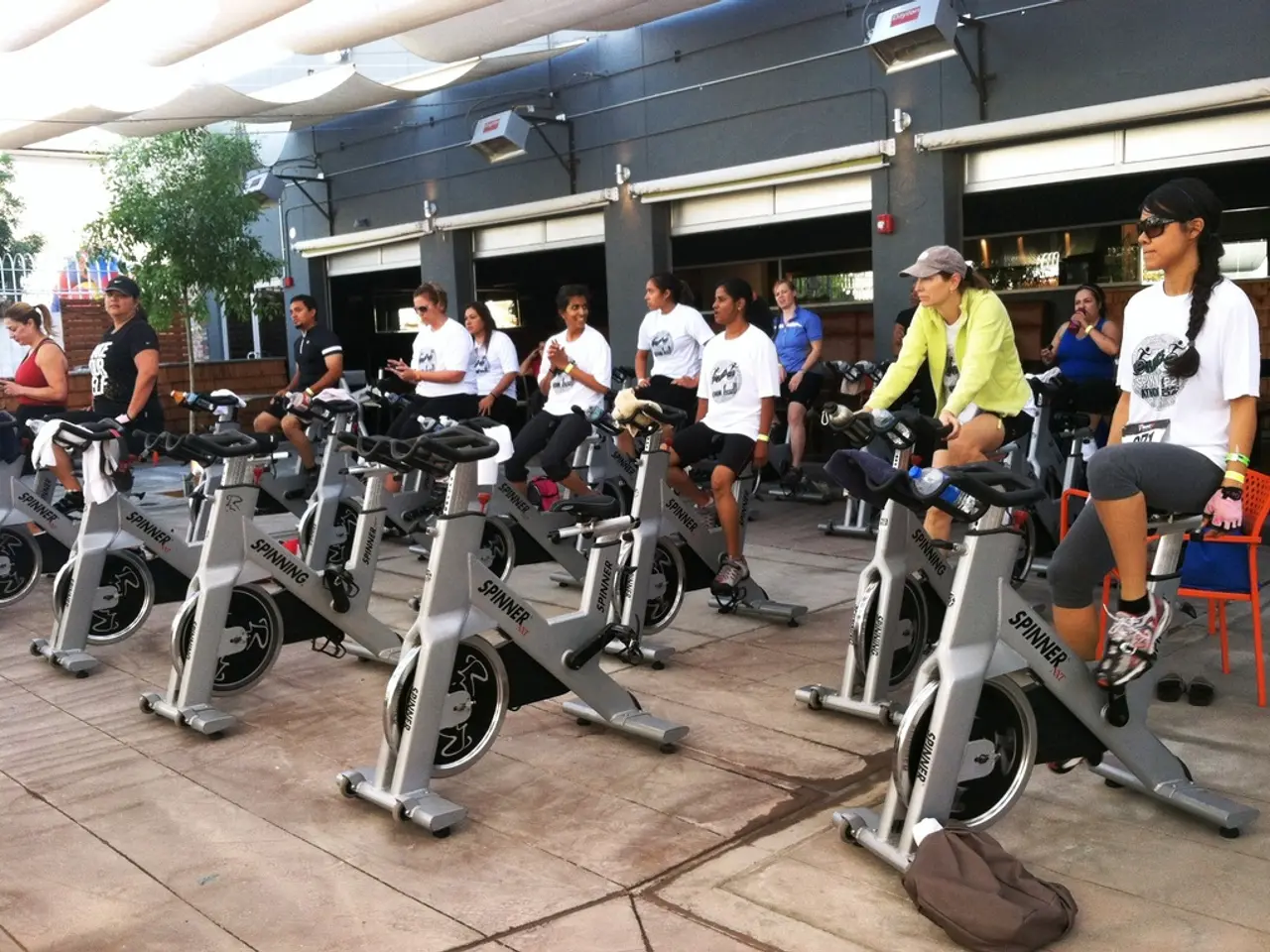Do you often spend extended periods of time in a seated position?
In today's sedentary work culture, it's easy to spend ten hours a day sitting. However, incorporating regular exercise into your daily routine is crucial for both physical health and mental well-being. Here are some effective strategies to help you increase everyday movement and make exercise a part of your life.
Firstly, purposeful movement breaks can be integrated throughout the day. Instead of waiting for a full workout session, take short breaks to move. Aim for a cadence of about 100 steps per minute to reach moderate-intensity[1]. Examples include walking briskly during breaks, parking farther away, or getting off public transport a stop early to add steps.
Secondly, micro-workouts, or "movement snacks," can be a quick and easy way to fit exercise into your day. These are brief exercises lasting just a few minutes. Examples include 5-minute stretching routines for flexibility and strength, doing squats or lunges during TV commercial breaks or when changing scenes, air squats, arm circles, and leg swings to counter stiffness[1][2][3].
Thirdly, incorporating more movement into routine tasks can help increase daily activity. Use stairs more creatively (e.g., walking sideways or skipping steps), do calf raises while brushing teeth, or pace while reading emails. Dancing to one song a day can also boost movement and mood[2][3].
Fourthly, using ergonomic aids can help reduce prolonged sitting and increase daily activity, especially for desk-bound workers. Standing desks and walking pads are examples of such aids[4][5].
Lastly, making social time active can turn interactions into opportunities for movement or light exercise. This can help you stay active while enjoying social engagements[4][5].
The World Health Organization recommends at least 150 minutes of moderate-intensity activity per week, and these strategies help accumulate that time conveniently without needing long dedicated exercise sessions[1]. Alternatively, at least 75 minutes of high-intensity exercise can be incorporated into the week. Every bit of exercise is better than none, according to the WHO.
Examples of high-intensity exercises include jogging or interval training, while moderate-intensity exercises include brisk walking or relaxed cycling. In addition, adults should incorporate muscle-strengthening exercises on at least two days a week. Examples of muscle-strengthening exercises include push-ups.
Simple actions like packing the sports bag the evening before, pumping up the bicycle tire, or rolling out the yoga mat can remove obstacles to exercising. Walking or cycling to work, the supermarket, or appointments increases daily movement. Making sports activities a daily habit at the same time and place can help establish a routine.
These strategies, based on the report "How healthy does Germany live?" by the German Health Insurance Fund (DKV), aim to make exercise a part of daily life, rather than focusing on lengthy workouts. By building small, consistent habits, you can increase everyday physical activity in a sustainable way.
Science suggests that purposeful movement breaks and micro-workouts can significantly improve health-and-wellness, as they help meet the World Health Organization's recommendation of at least 150 minutes of moderate-intensity activity per week. Fitness-and-exercise, in the form of brisk walking, stretching routines, and calf raises, can be effectively incorporated into routine tasks and everyday life, enhancing both physical health and mental well-being.






